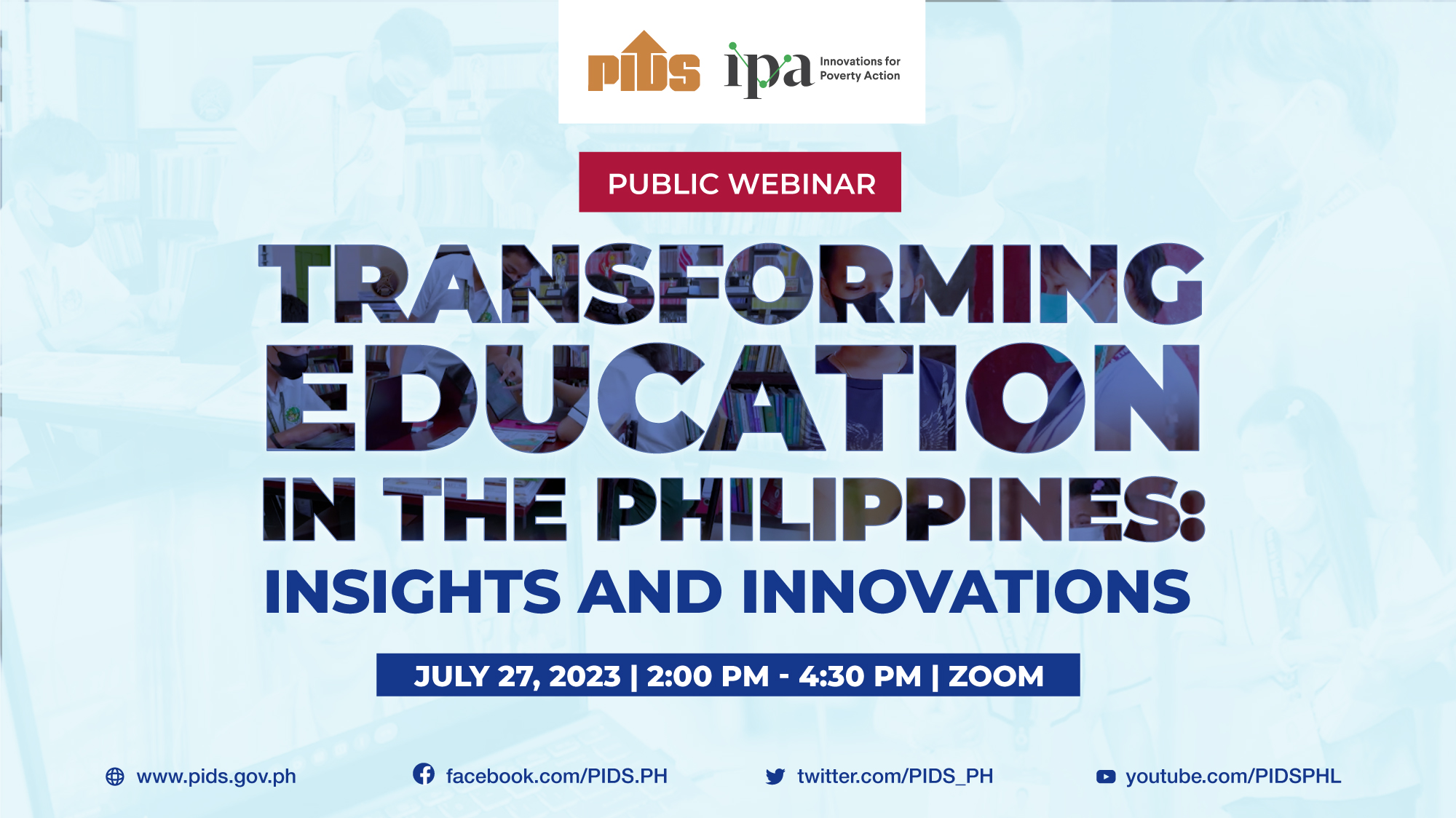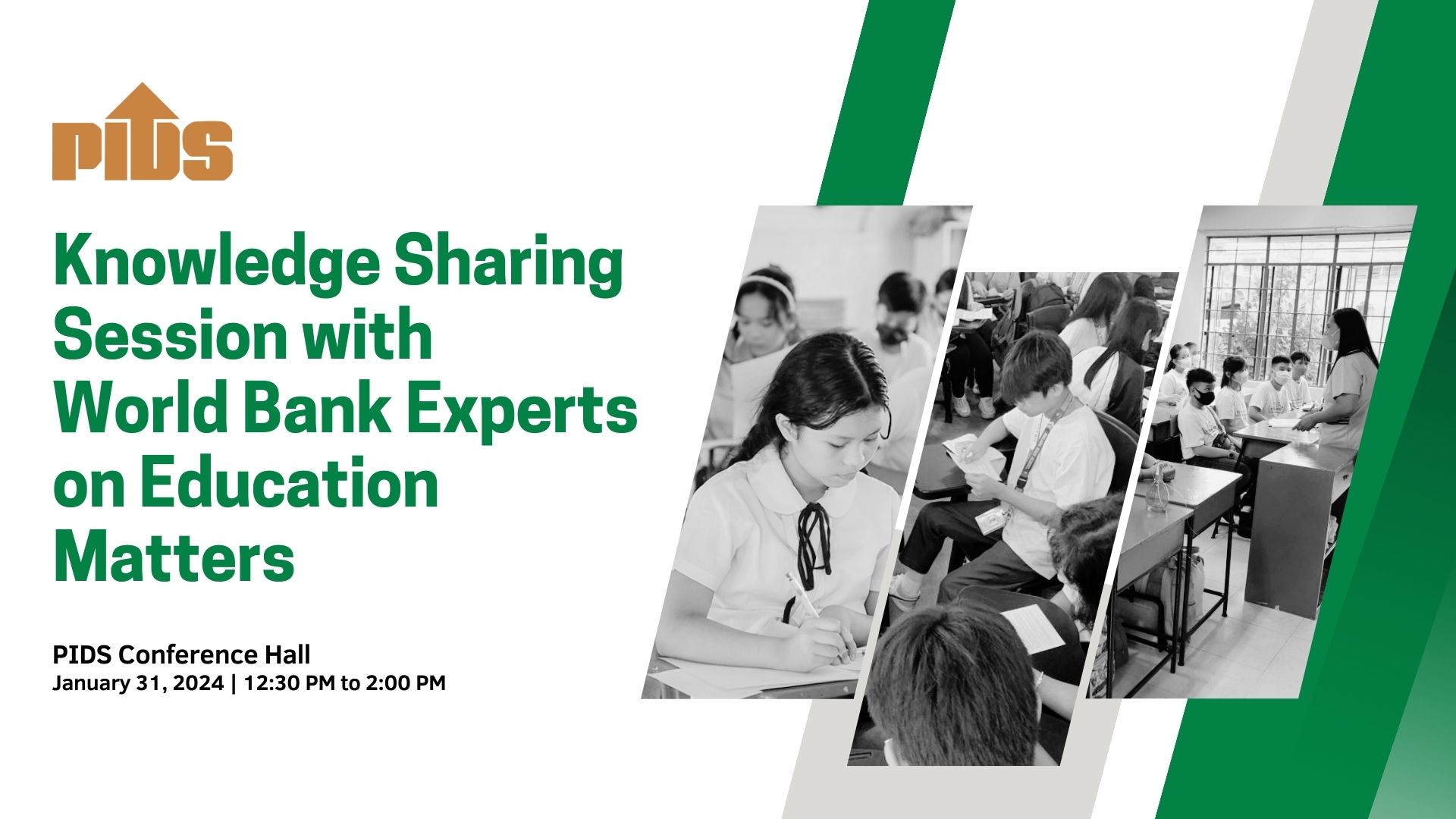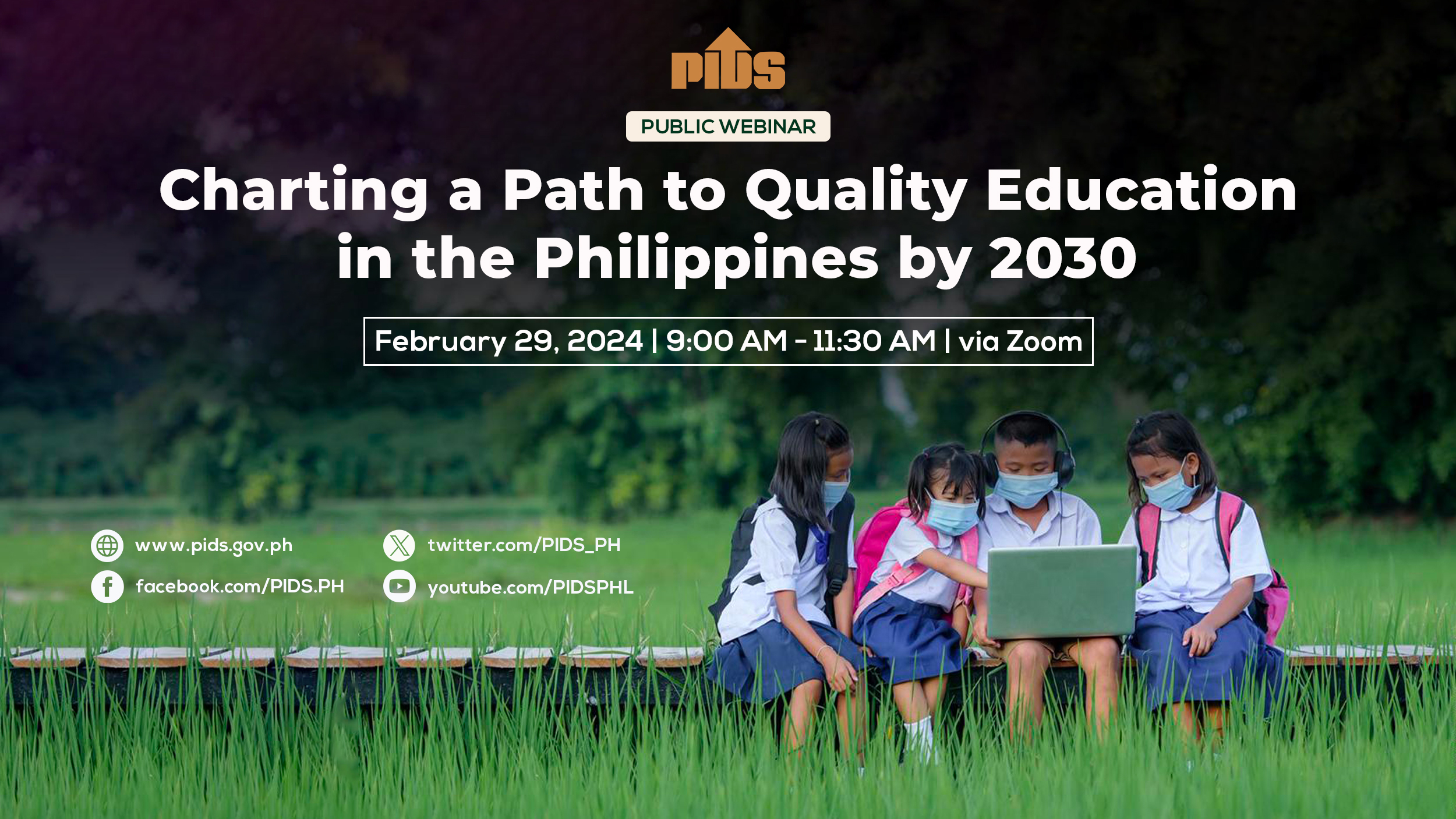Is the Philippine basic education sector hanging by a thread?
Every election, parents, learners, and teachers echo Rhodge’s aspiration of having a basic education system that is accessible to every Filipino child. However, the government across various administrations have always fallen short in delivering its promises, specifically in terms of equity and access. As we approach the end of the campaign period, Filipino voters will soon have to make the crucial decision that will not only determine the future of the country but also define the future of the Filipino learner beyond the six-year term of the next administration’s top officials.
Two years of the COVID-19 pandemic compounded pre-existing problems in our already embattled basic education system, such as the lack of teachers and learning resources, classroom shortages, student drop-outs, declining learning quality, and school disruption due to natural and human-induced calamities, among others.
Pre-pandemic assessments already showed that the Philippines scored significantly lower in global assessments like the Trends in International Mathematics and Science Study in 2019 and the 2018 Program for International Student Assessment (PISA). The Department of Education (DepEd) reported in 2021 that there remains to be a 110,954 classroom gap, which would require a budget of at least PhP 300 billion from 2021 to 2023. A recent study conducted by the Philippine Institute for Development Studies (PIDS) also showed the inability of the DepEd to meet its Computerization Program targets in 2019 and 2020, with only 8,523 schools out of the 14,342 target receiving information and communications technology (ICT) packages.
As the Duterte administration gave no clear solutions to avert the education crisis, the 2022 elections are crucial in ensuring that the next leaders will provide concrete programs and interventions to address both the impact of the pandemic and the pre-existing problems that has plagued our basic education system for decades. At this point, it is not enough for candidates to have a generic education agenda; what the country direly needs is an education policy that specifically prioritizes disadvantaged and marginalized sectors and communities, especially those heavily hit by the pandemic.
Aral Pilipinas weighs in on the education agenda of the presidential candidates in terms of their plans for: 1) recovery from the impact of the COVID-19 pandemic to the education sector, and 2) bridging inequity in terms of access and support services for learners and teachers from the marginalized and vulnerable sector.
Cycle of broken promises
Without a doubt, the country’s next leader must make education a priority and consistently implement policies and programs to bridge gaps and improve education access and quality. Every election, candidates promise to improve basic education by investing in both infrastructure and teachers, but these often end up as broken promises by the end of their term. According to the analysis of PIDS, education spending per person in the country has grown robustly over the past 25 years, even surpassing the growth in per capita income. Despite this feat, the Philippines’ education spending levels trail behind its regional and aspirational peers, contributing to its poor performance in international standardized student assessments.
In 2004, Gloria Macapagal-Arroyo committed to mainstream distance learning through her “Strong Republic Schools” program with the objective of making education accessible in areas without classrooms or teachers. Arroyo also started internet-based education programs to help learners adapt to the digital age. These programs failed to take off due to a multitude of reasons ranging from limited resources to lack of political will. Had these programs been sustained during and beyond Arroyo’s term, it would have made a significant difference in the education system’s ability to respond to the massive demand for blended and remote learning during the COVID-19 pandemic.
Meanwhile, Arroyo’s successor, Benigno Aquino III’s basic education agenda focused on human capital investment and poverty reduction, which increased the education budget from P161 billion in 2010 to P410 billion in 2016. On top of this, massive investments were also made to expand programs like the Pantawid Pamilyang Pilipino Program or 4Ps, a conditional cash transfer program continued from Arroyo’s time, which are direct investments on health and education. The Duterte administration focused on free tertiary education, leaving the basic education agenda behind in terms of priorities. The dismal state of the country’s basic education became the backdrop of DepEd’s significant efforts to ensure learning continuity amidst the pandemic. Unfortunately, two years into the pandemic, more than 80% of schools remain closed.
As a result of decades of broken promises and misplaced priorities, the next president will face long-standing challenges in the basic education system and the need to respond to equity and access issues such as special education (SPED) and alternative learning system (ALS).
Challenges in the Education System
Declining learning quality and widening inequity
A World Bank report in 2021 indicated that 90% of Filipino children are suffering from "learning poverty" or the inability to read and understand simple text by age 10. All children should be able to read by age 10. Reading is a gateway for learning as the child progresses through school. Conversely, an inability to read slams that gate shut. The declining learning quality is just one of the many challenges that needs immediate attention of the incoming president.
UNICEF’s 2021 report on the situation of children with disabilities in the context of COVID-19 highlighted major concerns on the inability to access essential services, specifically, education services and learning resources (52%), child development services (51%), habilitation and rehabilitation services (49%), and general health services (43%). Still on equity, USAID’s 2021 report on out-of-school youth (OSY) details how the COVID-19 crisis adversely and disproportionately affected education, employment, and livelihood opportunities for the youth. The percentage of OSY increased significantly during the pandemic, from 16.9% in January 2020 to 25.2% just three months later, in April 2020.
The issues concerning classroom-student ratio need to be addressed as well, especially for last mile schools where the DepEd needs to construct at least five classrooms each, according to a study published by PIDS. Moreover, the country’s school infrastructure and basic facilities have remained problematic. Problems in this area include inadequate water sanitation and hygiene (WASH) facilities, and limited electricity and internet access in schools which hinder digital learning requirements.
Negative effects of prolonged school closure
The COVID-19 pandemic caused massive school closure and challenges in distance learning. A recent cost-benefit analysis by the Asian Development Bank (ADB) showed that the Philippines loses around Php1.93 trillion in a year of school closures. Also, based on a latest World Bank estimate, the country’s learning-adjusted years of school (LAYS) have been pushed back from 7.5 years pre-pandemic to 5.9-6.5 years, depending on the duration of school closures and the effectiveness of distance learning
Overworked teachers
The Alliance of Concerned Teachers reported that the implementation of distance learning saw the assignment of old and new tasks to teachers that have little or no connection to their teaching duties, or proved to be too much to take amid the drastic adjustments they have to make for the new teaching modalities. Some of these tasks include deworming program, feeding program, submission of daily journal to prove that they are accomplishing their duties while working from home, module writing, and printing of the modules, among others.
Private school closures
Data from DepEd showed that the number of private schools suspending operations for School Year 2020 to 2021 reached 865. The closures affected 58,327 learners and 4,488 teachers. These figures are discouraging considering that private schools help support parents by providing opportunities to choose delivery of quality education.
Priority post-COVID-19
Given the challenges in basic education, a responsive recovery plan to address the negative impact of the COVID-19 pandemic on basic education is an urgent need that requires immediate response from the next administration. The pandemic affected approximately 27 million learners in 2021, many of whom struggled to cope with the demands and resource requirements of remote learning but had to continue with their education anyway.
The Philippines was one of the last countries to open up its schools for limited face-to-face classes. From a pilot of 287 schools (265 public and 22 private), the DepEd recently reported 10,196 schools (9,994 public and 212 private) doing face-to-face classes, but this is only 16.86% of the total schools (public and private combined) in the Philippines. It is imperative to increase the number of schools for face-to-face learning by making sure schools have all the necessary safeguards in place to ensure health standards. A dependable leadership will also address parents’ apprehension in sending their children back to school amid the on-going pandemic.
Based on available information, Leni Robredo, Isko Moreno, and Leody De Guzman have detailed plans for pandemic recovery specific to education, with Robredo and De Guzman able to capture both the needs of learners who will return to school for face-to-face classes as well as preparing for the possibility of surges that would require gadgets and connectivity for blended learning. The other presidential candidates have no publicly available statements specific to education and recovery from the pandemic.
Focusing on equity and access
The widening and worsening gap in equity is another area of work that needs a comprehensive plan from the next administration. It is not enough to build schools or to provide teacher training; equity and access require having programs that would complement each other, like building classrooms in geographically isolated and disadvantaged areas (GIDA), with sufficient teachers who are trained to teach indigenous peoples (IP-sensitive education), and having road networks so students can get to and from school safely, among others.
From the roster of presidentiables, Vice President Leni Robredo and Senator Ping Lacson presented education policies that respond to issues of equity and access particularly by investing in learners and facilities in geographically isolated, disadvantaged, and conflict-affected areas (GIDCA), while Ka Leody De Guzman and Senator Manny Pacquiao both underscored the need to provide equal opportunities for learners with disabilities.
Other candidates like Manila Mayor Isko Moreno focused on the provision of gadgets and internet access for public school students and teachers, while Bongbong Marcos promised to continue the present administration's ‘Build Build Build’ program including investing in digital infrastructure, without however detailing how these would respond to the learning crisis nor to the issue of equity. Meanwhile, De Guzman is the only candidate to lay out anti-discriminatory plans for schools. There are presidentiables like Ernesto Abella and Norberto Gonzales who have yet to provide their platform for basic education, while there are the likes of Marcos who did not give specific positions to avoid contrasting opinions.
Reflecting on the “uncensored” education realities
Prioritizing education should be an active choice and it should be reflected in the programs to be consistently implemented and sustained across administrations. Based on available information, the agenda of most presidential candidates have been aligned with their track record in public service. This means voters must be quick to spot presidential candidates who have always supported meaningful reforms in basic education in contrast to candidates whose pronouncements are not consistent with their track record or lack thereof.
Traditionally, the gains of previous administrations are often negated by the succeeding administration because even good programs are sometimes discontinued or changed. The combination of broken campaign promises and the failure to sustain gains of good programs must end. Filipino learners already suffer from the failures of the education system. Those aiming to be the next president must have a plan not just for the present but for the future of the Filipino learners. In choosing the next president, consistency and political will are key along with the sincere passion and compassion to serve the people, especially the poor and marginalized, towards a just and peaceful society.
We call on all presidential candidates to present their clear and timebound education platform so voters can make an informed decision on election day. The nation deserves nothing less. Every Filipino child has a fundamental right to education,r and their enjoyment of that right depends on the voters’ ability to choose the best candidate who will end the cycle of broken promises.
Breaking the cycle of broken promises: Why the 2022 polls are crucial for PH basic education












